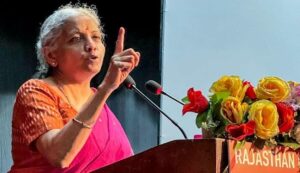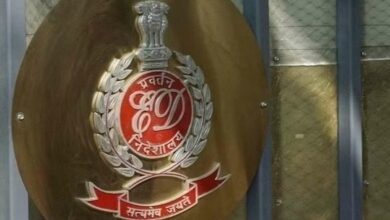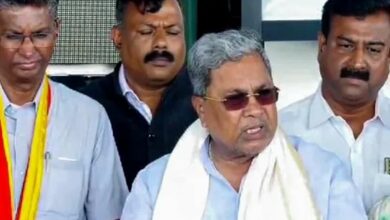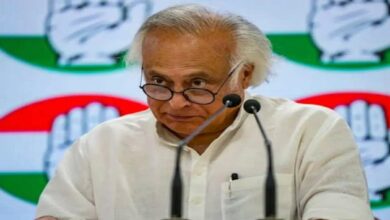Union Finance Minister Nirmala Sitharaman leaves for Rashtrapati Bhavan from North Block
New Delhi: On Saturday, Union Finance Minister Nirmala Sitharaman departs from North Block for Rashtrapati Bhavan with her signature “bahi-khata,” a tablet with a golden national symbol imprinted on it and wrapped in crimson fabric.

At 11 a.m. today, Sitharaman will deliver her budget to the Lok Sabha for the eighth straight year. The government’s economic objectives, proposed income and spending plans, tax changes, and other noteworthy announcements will all be included in the budget address.
The finance minister was accompanied by Union Minister of State for Finance Pankaj Chaudhary, Chief Economic Advisor Dr. V. Anantha Nageswaran, and other officials.
In the meanwhile, the Economic Survey, which was presented to Parliament on Friday, predicted that India’s GDP will expand by 6.3% to 6.8% over the next fiscal year 2025–2026.
The country’s economic fundamentals are still sound, according to the poll, which was presented the day before the union budget. These are bolstered by private consumption, fiscal consolidation, and a steady external account.
It said that the government intends to prioritize capital goods, micro, small, and medium-sized businesses (MSMEs), and research and development (R&D) in order to support long-term industrial growth. The goals of these initiatives are to increase global competitiveness, productivity, and innovation.
“With a healthy external account, balanced fiscal consolidation, and steady private spending, the foundations of the domestic economy are still strong. Taking all of these factors into account, we anticipate growth in FY26 to be between 6.3% and 6.8%,” the statement said.
According to the poll, the seasonal drop in vegetable prices and the start of the Kharif crop are likely to reduce food inflation in Q4 FY25. In the first half of FY26, a strong Rabi crop is also anticipated to contribute to the control of food prices. On the other hand, inflation is threatened by unfavorable weather patterns and growing global food prices.
According to the report, India’s foreign currency reserves are still robust, covering 90% of its external debt and supplying more than 10 months’ worth of imports. Before leveling out at USD 634.6 billion as of January 3, 2025, the reserves rose from USD 616.7 billion in January 2024 to USD 704.9 billion in September 2024. The external strength of India has been bolstered in large part by the steadiness of capital flows.
Significant expansion in the formal employment sector was also noted by the poll. From 61 lakh in FY19 to 131 lakh in FY24, the number of subscribers to the Net Employees’ Provident Fund Organization (EPFO) has more than doubled.





